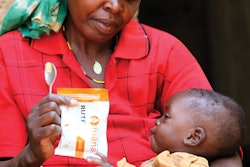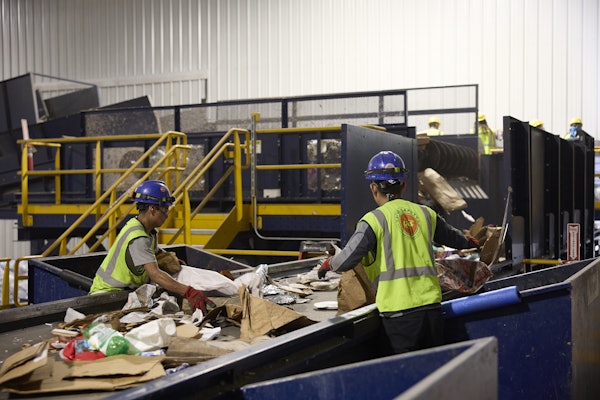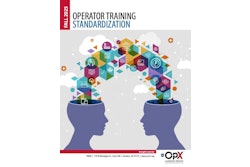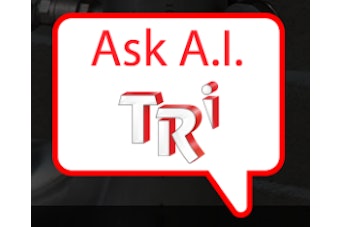
Packaging World:
What is meant by the term “sensory packaging”?
Philip VanDusen:
Sensory packaging is packaging that goes beyond the visual. It really encompasses all of the senses, engaging touch, smell, taste, and sound. It is packaging that leverages a greater realm of the senses to make the brand experience indelible—whether it’s on the shelf, or whether it’s at home when you open the box. A great example of sensory packaging is a “scratch-and-sniff” label on the outside of a package. It could also be something tactile, like velvet flocking, Kraft papers, wax seals, raffia, ribbons, or anything else that makes the package interaction more than a pedestrian experience.
One brand that uses scratch-and-sniff labels effectively is Glade Air Freshener for its clubstore packs. This is a great example because the package aligns with one of the product’s highest selling points: smell. When you are buying an air freshener and the package indicates the scent is Fresh Linen, unless you break the seal and squirt the product in the air in the store, you won’t really know what you are getting. So giving people the opportunity to have more confidence in the purchase is really important. There are other brands that are leveraging that level of scent as well. Crest Toothpaste has a scratch-and-sniff label on the outside of a few of its boxes. That’s really more linked to taste, but it is smell that brings a sense of the taste to mind.
How important is it to align the sensory effects of a package with the specific brand?
That is a key point. It’s not enough just to choose a stock structure and add a scratch-and-sniff feature or put velvet flocking on the outside of it. The packaging and the sensory experience that is being created really have to align with the product. For example, Skyy Vodka did this wonderful limited-edition holiday vodka bottle where they put velvet flocking in a beautiful pattern on the outside of the bottle. So when you pick up the bottle, you get this very luxurious, visual experience, but then you get a tactile experience as well. That kind of warmth really reflects the warmth and the sense of wellbeing that you feel when you have your Skyy Vodka cocktail. The flocking reflects what the experience of the product is going to be and what the experience of the brand should be.
What are the advantages for a brand that uses sensory packaging effectively?
What people in retail want to do more than anything else is drive trial, especially with new products. So increasing the curiosity of the consumer and getting them to engage with the packaging is of ultimate importance. You want to rise above the competition; you want to create a sense of differentiation between you and your competitor. You also want to drive a level of entertainment. I think that retail experiences and consumer expectations have gotten so high that they expect entertainment and engagement and honesty at every single level of the experience—from walking into the store, to seeing a package, to picking it up, to using it—and all of those things have to align for them.
Another advantage is that you can elevate the value perception of your brand by giving the consumer more for their experience. Sensory packaging encourages a longer interaction with the consumer, so it creates an avenue to establish a deeper experience, or for that experience to create a more indelible memory in the consumer’s mind. Also—and this is a big one in today’s blogosphere, multimedia world—it gives you more chance of being talked about, more chance of being Tweeted about, and more chance of people putting details of their interaction with your product on their Facebook feed. Adding that level of interest and noteworthiness is important.
Is there one product category for which sensory packaging is more appropriate or more commonly used than others?
I think it is more commonly used in a couple of industries, but any industry can use it. I read a fact recently in Martin Lindstrom’s book, “Brand Sense: Sensory Secrets Behind the Stuff We Buy.” It said that only about 3% of Fortune 100 brands use scent for marketing. So there are huge opportunities for brands to leverage a broader range of the senses.
The beauty industry uses sensory packaging really well. They leverage scent, and they leverage touch through the tactile aspect of their products. They haven’t so far leveraged taste, except maybe in lipstick in terms of the sensory branding experience, but there are examples out there of ink that changes color with the heat of your touch when you pick up the package, or plastics that smell like the product itself.
Food, beverage, and household products are also using sensory packaging pretty well. They are definitely starting to get into scratch-and-sniff. In the case of Procter & Gamble’s Downy Unstoppables, the product is made up of little granules that you add to your dryer to create a scent on your clothing. P&G created this great little port on top of the bottle, so when you squeeze it, you can smell the fragrance that you will be getting on your clothes. Just as with the Glade product, it is of key importance that you know the smell of the product you are buying. Unstoppables is a new product, so a lot of people don’t even know what it is and don’t have any history with it. So being able to have that level of comfort with a brand-new product is really important.
You are also seeing sensory packaging more in medical. They are incorporating things like braille and textures in medical and pharmaceutical packaging so people don’t make mistakes with their medication. I’m not sure why they are not making more use of shapes, as we obviously have an aging population. Shape can leverage more senses for those aging eyes, and for failing hearing, and for loss of manual dexterity in opening caps.
For those brand owners who use clamshell packaging for high-value products, they have created a horrible sensory experience. Most of these companies would say this is because they have to deal with shrinkage and theft; that’s why they have utilized these heavy, blow-molded clamshells that are absolutely impossible to open. They’ve created an incredibly negative interactive experience for consumers with their packaging.
Companies need to look at the entire experience of interaction with their package from 20 feet away, 10 feet away, 2 feet away, in the consumer’s hand, when they take it home, and when they open it. What does it feel like? What is the experience? What’s it smell like? It really has to be looked at from every single aspect and made to be as pleasurable an experience as it can possibly be.
Is there any research on which type of sensory packaging is most effective?
I think the research is just beginning to really come out. But smell is the dominant sense in humans and in many animals. Scents evoke memories that comfort more quickly and repel more quickly than anything else. Think about some of those super-indelible memories related to smell. Think about Play-Doh. You just say the words “Play-Doh,” and you know exactly what it smells like because it is one of those deeply rooted memories from your childhood.
Research shows that if people focus on a product for more than three seconds, they are 63% more likely to buy it, and if people pick up a product, they are 96% more likely to purchase it. So getting a consumer pick up your package and interact with it is vital. So if a customer sees a product that has scratch-and-sniff label that makes them want to try it, or a package that is textured or has a wonderful shape that they want to hold—just getting them to interact with it is one of these gigantic hurdles that if you can get over it, you are 96% more likely to be purchased.
One great example of that is Pop Secret. The brand just created a new plastic bottle for their loose popcorn kernels. The bottle has the texture of an ear of corn on the outside. So as you look at this bottle on the shelf, you just want to pick it up and touch it, because it feels just like an ear of popping corn, and visually it is very engaging and makes you want to reach out. Leveraging that sense of touch is really great.
Does sensory packaging have to entail a big investment?
Obviously, it can—anything you do on top of a stock structure is going to cost you. But it doesn’t have to cost a lot. You can do a lot with varnishes, with unusual paper stocks, with high-quality label designs, or with more remarkable structures or structures that are more remarkable in their category.
For that, Method laundry and cleaning products is a great example. They really broke all the norms in that category. They used clear bottles, they used a very interesting color palette for their products, and they used extremely unique shapes. They had a really high level of design. They pulled out all the stops in unison and changed the category, but they didn’t break the bank by doing it. The changes were actually extremely simplistic, but when you looked at the laundry aisle, the Method bottle was so striking and stood out so much in the sea of orange and bright-blue laundry products that you couldn’t help but stop to find out what it was.


























